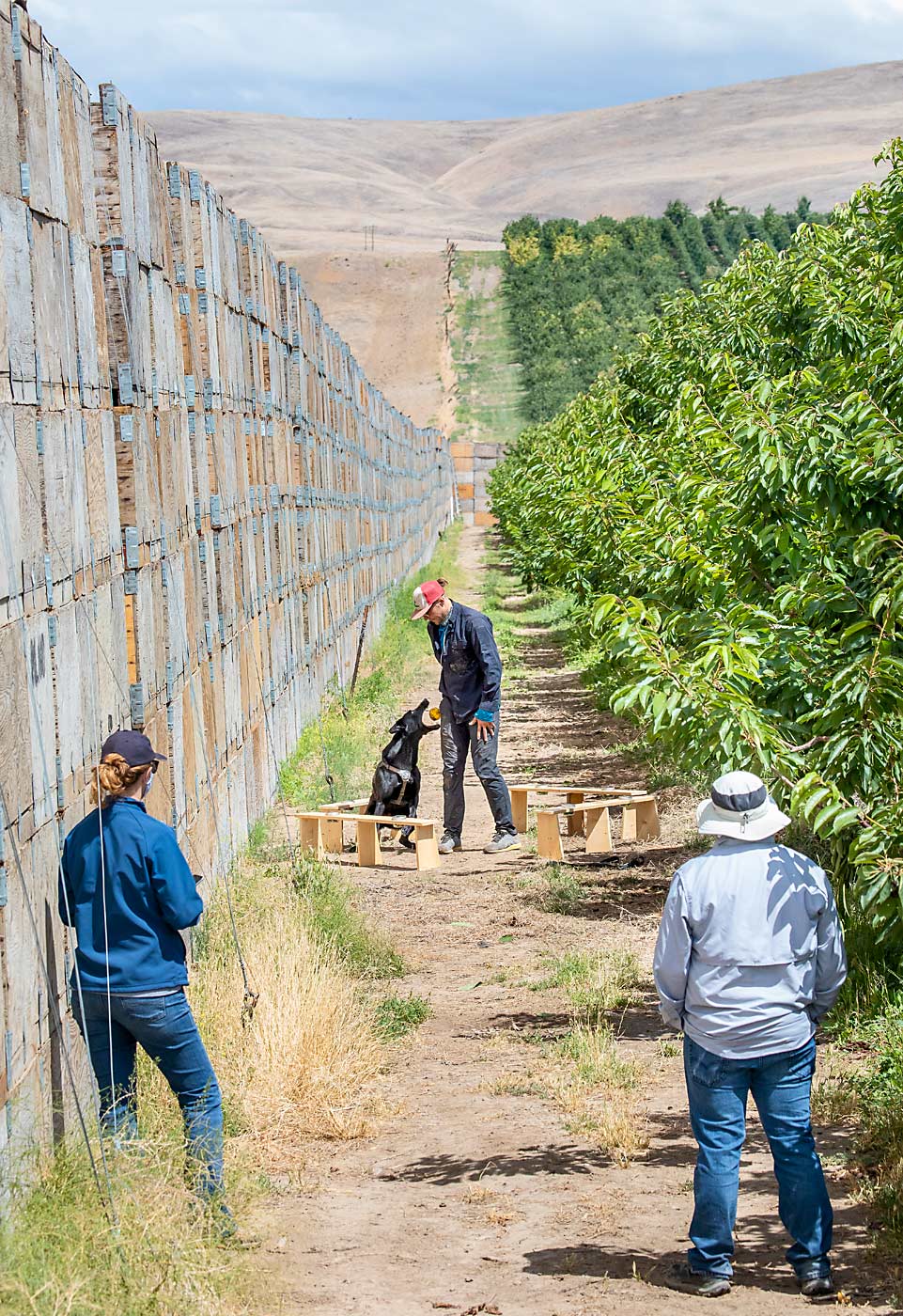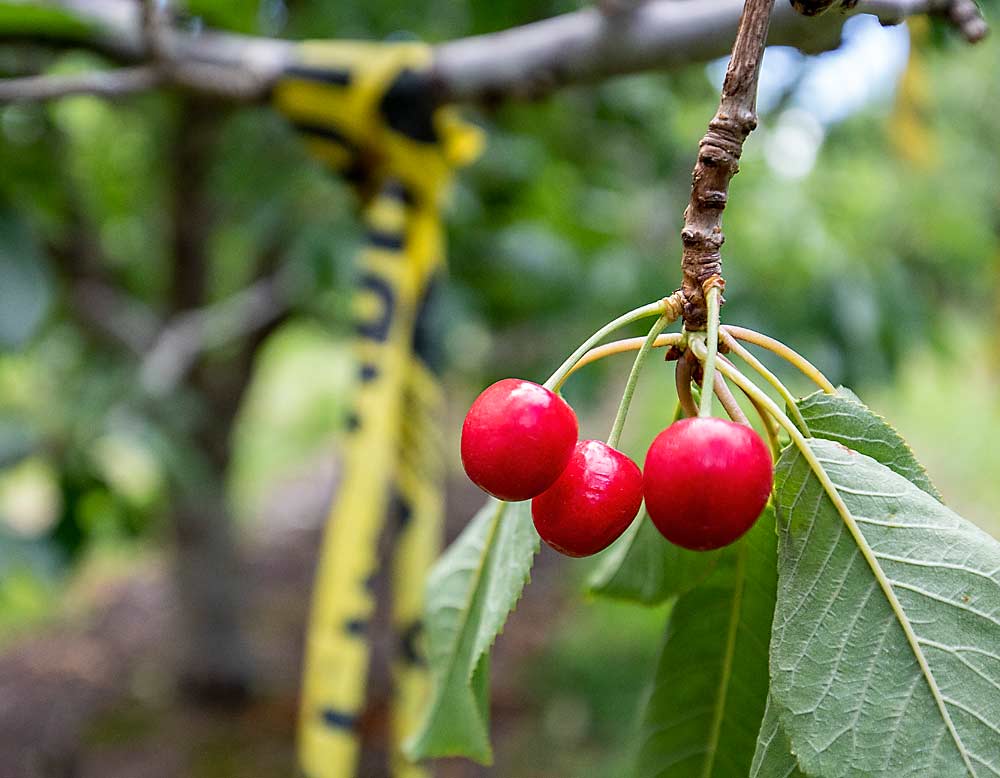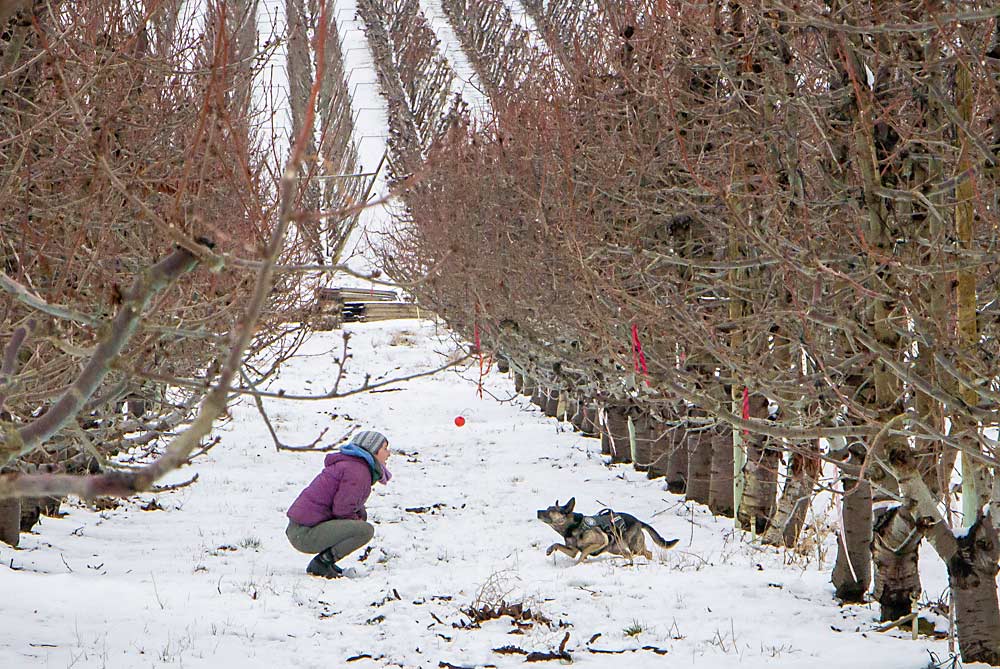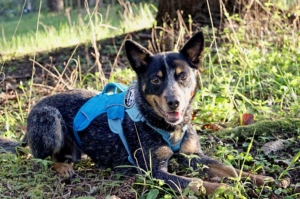
Trained dogs can detect the presence of little cherry disease in cherry leaves, an industry-funded pilot project shows, but efforts to deploy that ability to help growers have stalled.
“We still think there is something to it, but we couldn’t figure out how to make it work,” said Ines Hanrahan, executive director of the Washington Tree Fruit Research Commission.
Inspired by the success of a U.S. Department of Agriculture program that trains dogs to detect citrus greening and plum pox virus, the commission invested in a pilot project in 2019 with Rogue Detection Teams to see if its dogs could reliably distinguish between healthy and infected cherry leaf samples.
The initial trials looked promising, so last year the commission scaled up its investment and invited Rogue to start testing in the orchard. That’s where challenges started to become apparent: For starters, spray schedules complicated when the dogs could safely work, and trees of unknown infection status made it difficult to verify if the dogs were actually on track.
“In order to train the dogs, you have to have known clean trees and infected trees. We don’t have a consistent source for the dogs to test, so logistically, it becomes a nightmare,” Hanrahan said. “But we had to do it because we have this real need for testing.”
The central testing problem facing the industry is that much like COVID-19, asymptomatic spread makes X disease and little cherry disease difficult for growers to eradicate from their orchards.

“The problem we have right now is the only time we can detect it reliably is one week before harvest, when we have fruit on the tree and high titer of the disease, especially X disease,” said Hanrahan. “We can only test when the patient is really sick. By the time we have visual symptoms and can have relatively reliable lab testing, it’s like a postmortem.”
Even if growers did want to invest in prophylactic testing and sampling trees before they show symptoms, the approach would be both cost prohibitive, at $100 per test, and potentially inaccurate if levels of the phytoplasma that causes X disease have not reached detectable levels, she said.
The hope was that the dogs could provide an early detection tool on an orchard scale, so that growers could cut off those sources of asymptomatic spread. But the same testing problems actually hindered the handlers’ ability to train the dogs.
“If you can’t confidently point to a tree and tell that it’s infected and the tree next to it is healthy, you can’t expect to train the dogs to do it,” said Jake Lammi of Rogue Detection Teams.
At the company’s home base in Northeastern Washington, they started off training the dogs using tree cuttings that had already been tested at the lab, so the trainers could reward the dogs with a little game of fetch every time they alert to the diseased samples. Using a training ring, with leaf samples in cups, they had the most success, he said. Dogs can reliably pick out the one infected sample from nine healthy ones.
“The easiest part of it is the proof of concept; that’s just scratching the surface,” Lammi said. “The jump from that to full deployment, there’s a lot of moving parts that make it more challenging. Some of that is in the orchards, so that is the way we train the dogs.”
Rogue’s training approach rewards dogs with play when they search and find desired targets; most of their common contracts involve finding scat from endangered animals. Training requires care to ensure that the eager-to-please pups are picking up the correct signal or pattern — a smell of the disease — not, for example, the flagging tape commonly used in orchards to denote infected trees.
“When you start telling the dog to search things, they will pick out any pattern you show them; it’s not always what you intend,” Lammi said. “It takes time and repetition.”
To do that necessary training in a scientific way, it became apparent that the industry would need to invest in a training grounds, with a supply of potted trees, some intentionally inoculated, that could be rearranged as the dogs hone their skills, Hanrahan said. That’s not possible with the $40,000 annual budget the industry allocated for canine detection work in 2020 and 2021, so the commission decided to pull the project with Rogue.
In comparison to the USDA’s estimate for establishing a training program, which was tenfold higher, the Rogue option appeared to be an affordable way to test out the potential of dog detection, she said. Although the project won’t move forward in this form, the lessons learned may inform other dog detection efforts in the future — a kennel club in Wenatchee is interested, for example.

Lammi said he hopes the lessons from the project may still be able to help the cherry industry, albeit in a different way than the “rent dogs to come sniff out disease in your orchard” way the industry hoped. Growers could learn to work with their own dogs the same way if the dogs are motivated to learn. Perhaps Rogue could someday offer training workshops to the growers who want to run their own training ring approach, he said.
The Washington State Wine Commission also worked with Rogue last year on a pilot project to see if the dogs could detect the presence of grapevine leafroll virus. Similarly, while the dogs seemed to be able to find infected leaf samples in the training ring, the approach ran into too many hurdles at the vineyard scale and couldn’t deliver the data the industry needed to see, said Melissa Hansen, research director for the commission. But in California, the wine industry is working with the USDA to train dogs to detect red blotch virus, another vineyard threat, and there may be a chance in the future to expand that program to Washington, she said. •
—by Kate Prengaman







Leave A Comment